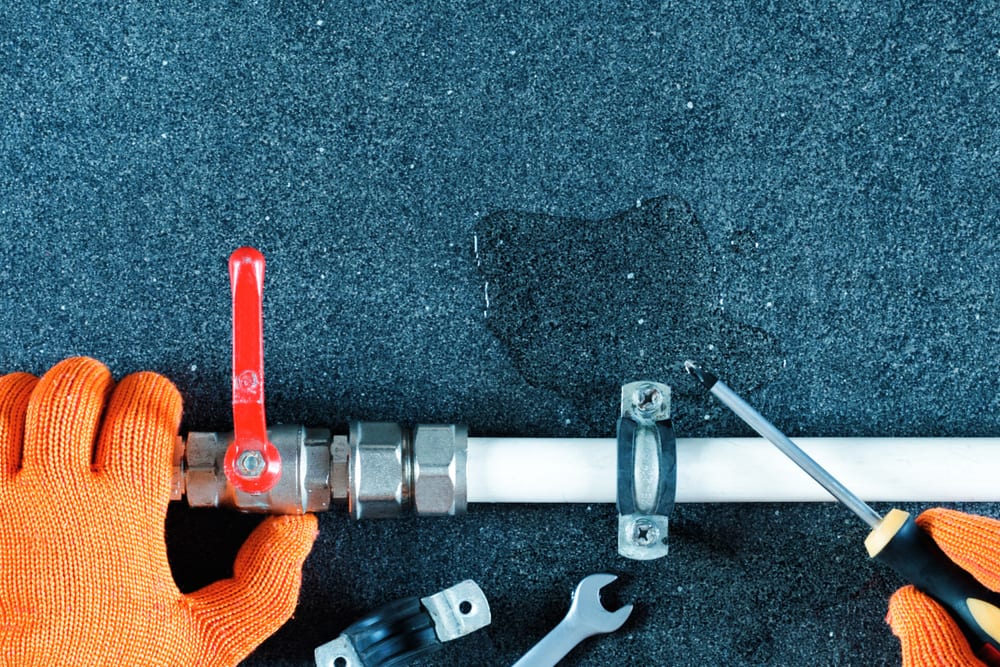Overview To Water Leakage Detection In Your Home
Overview To Water Leakage Detection In Your Home
Blog Article
We have uncovered this post relating to Finding hidden leaks down the page on the net and concluded it made sense to write about it with you over here.

Early detection of leaking water lines can minimize a possible calamity. Besides saving you cash, it will certainly minimize the irritation and also frustration. The moment you find a leakage, calling your plumber for repair work is the best service. Some tiny water leakages may not be visible. Below are some hacks that help if you can not spot it with your naked eyes.
1. Analyze the Water Meter
Examining it is a surefire method that helps you find leakages. If it moves, that suggests a fast-moving leak. This indicates you may have a sluggish leak that could even be below ground.
2. Inspect Water Intake
Assess your water bills and also track your water consumption. As the one paying it, you need to observe if there are any discrepancies. If you find sudden changes, in spite of your consumption coinciding, it means that you have leaks in your plumbing system. Bear in mind, your water costs need to fall under the very same variety on a monthly basis. An abrupt spike in your bill suggests a fast-moving leakage.
At the same time, a stable rise every month, even with the same routines, reveals you have a sluggish leakage that's likewise slowly rising. Call a plumber to extensively check your residential or commercial property, specifically if you feel a warm area on your floor with piping beneath.
3. Do a Food Coloring Examination
When it comes to water usage, 30% comes from toilets. If the shade in some way infiltrates your dish throughout that time without flushing, there's a leakage in between the container and bowl.
4. Asses Exterior Lines
Don't neglect to examine your exterior water lines also. Needs to water seep out of the connection, you have a loosened rubber gasket. One tiny leakage can squander tons of water and also increase your water expense.
5. Evaluate the circumstance as well as inspect
Home owners need to make it a behavior to check under the sink counters as well as also inside cabinets for any bad odor or mold development. These 2 red flags indicate a leakage so timely focus is required. Doing routine evaluations, also bi-annually, can conserve you from a significant problem.
If you know your house is currently old, maintain a careful eye on your heaters, hoses, pipes and so on. Check for stainings and compromising as most pipelines and home appliances have a life span. They will additionally naturally wear away due to wear and tear. Do not wait for it to intensify if you believe leaking water lines in your plumbing system. Call a professional plumber right now so you don't end up with a horrible mess in your home.
Early detection of dripping water lines can alleviate a prospective disaster. Some tiny water leakages may not be noticeable. Examining it is a proven means that assists you uncover leaks. One little leak can waste heaps of water and also surge your water bill.
If you presume dripping water lines in your plumbing system, don't wait for it to escalate.
WARNING SIGNS OF WATER LEAKAGE BEHIND THE WALL
PERSISTENT MUSTY ODORS
As water slowly drips from a leaky pipe inside the wall, flooring and sheetrock stay damp and develop an odor similar to wet cardboard. It generates a musty smell that can help you find hidden leaks.
MOLD IN UNUSUAL AREAS
Mold usually grows in wet areas like kitchens, baths and laundry rooms. If you spot the stuff on walls or baseboards in other rooms of the house, it’s a good indicator of undetected water leaks.
STAINS THAT GROW
When mold thrives around a leaky pipe, it sometimes takes hold on the inside surface of the affected wall. A growing stain on otherwise clean sheetrock is often your sign of a hidden plumbing problem.
PEELING OR BUBBLING WALLPAPER / PAINT
This clue is easy to miss in rooms that don’t get much use. When you see wallpaper separating along seams or paint bubbling or flaking off the wall, blame sheetrock that stays wet because of an undetected leak.
BUCKLED CEILINGS AND STAINED FLOORS
If ceilings or floors in bathrooms, kitchens or laundry areas develop structural problems, don’t rule out constant damp inside the walls. Wet sheetrock can affect adjacent framing, flooring and ceilings.
https://www.servicemasterbyzaba.com/blog/how-to-detect-water-leakage-in-walls/

I was made aware of that editorial about Hacks to detect leaks from a good friend on another website. Be sure to set aside a second to share this write-up if you liked it. Thank-you for your time spent reading it.
Report this page